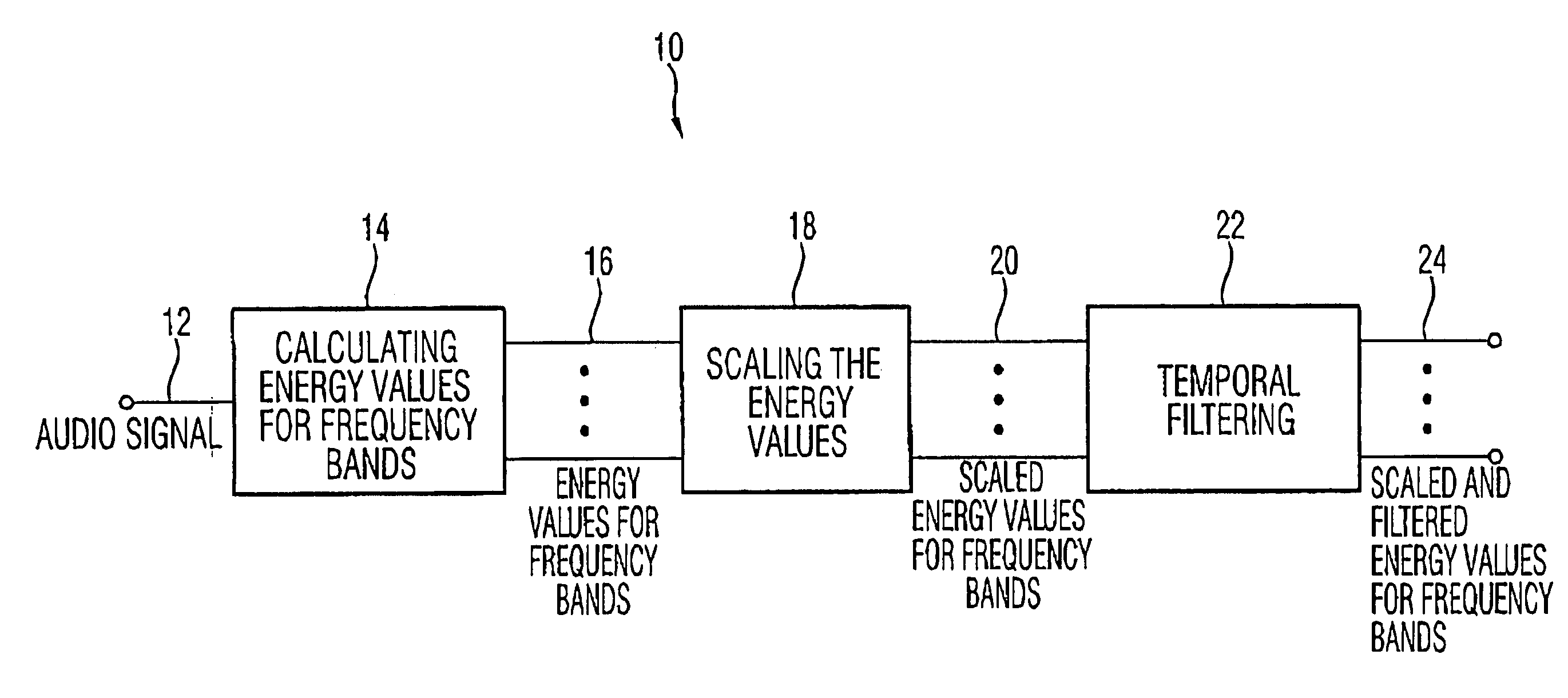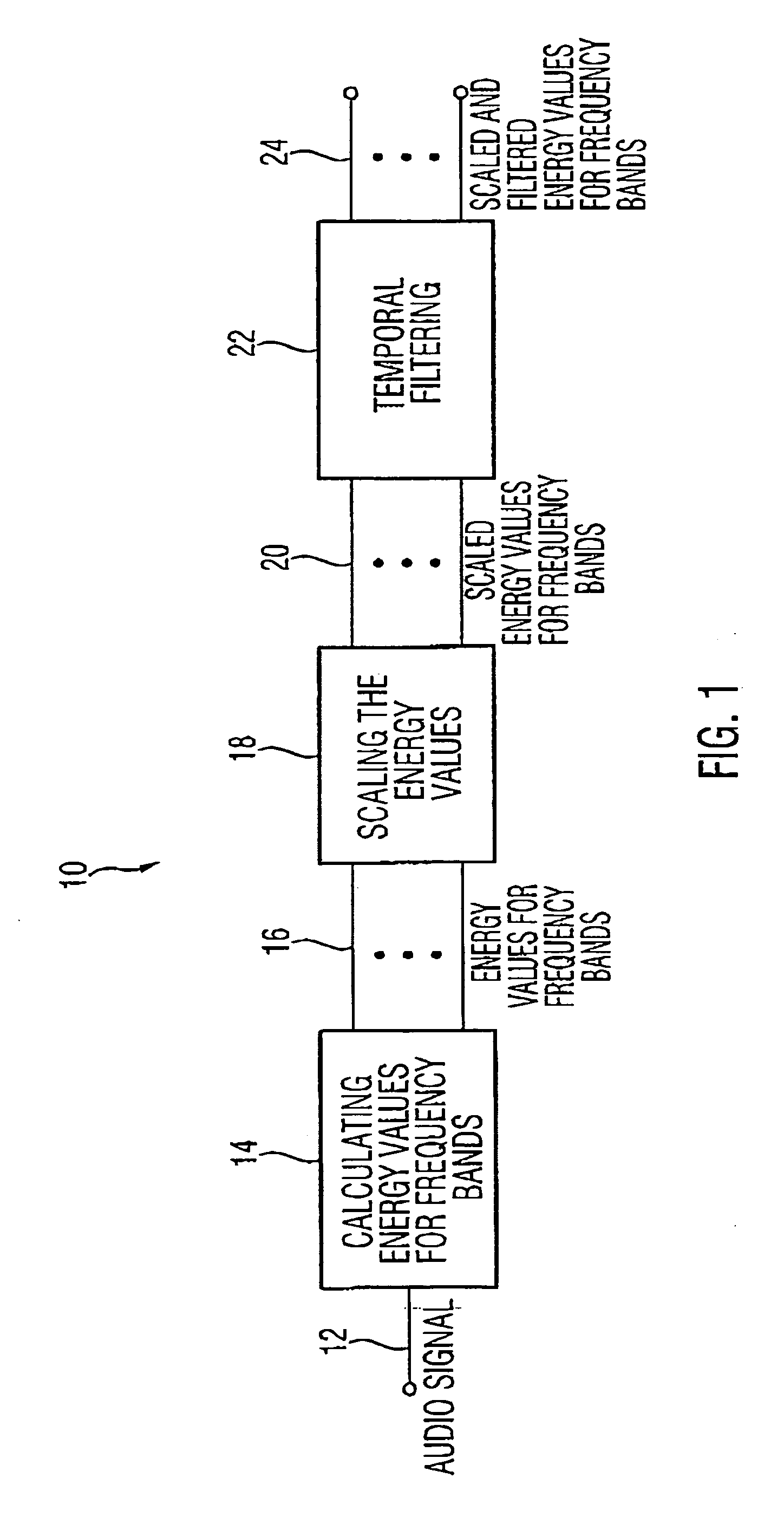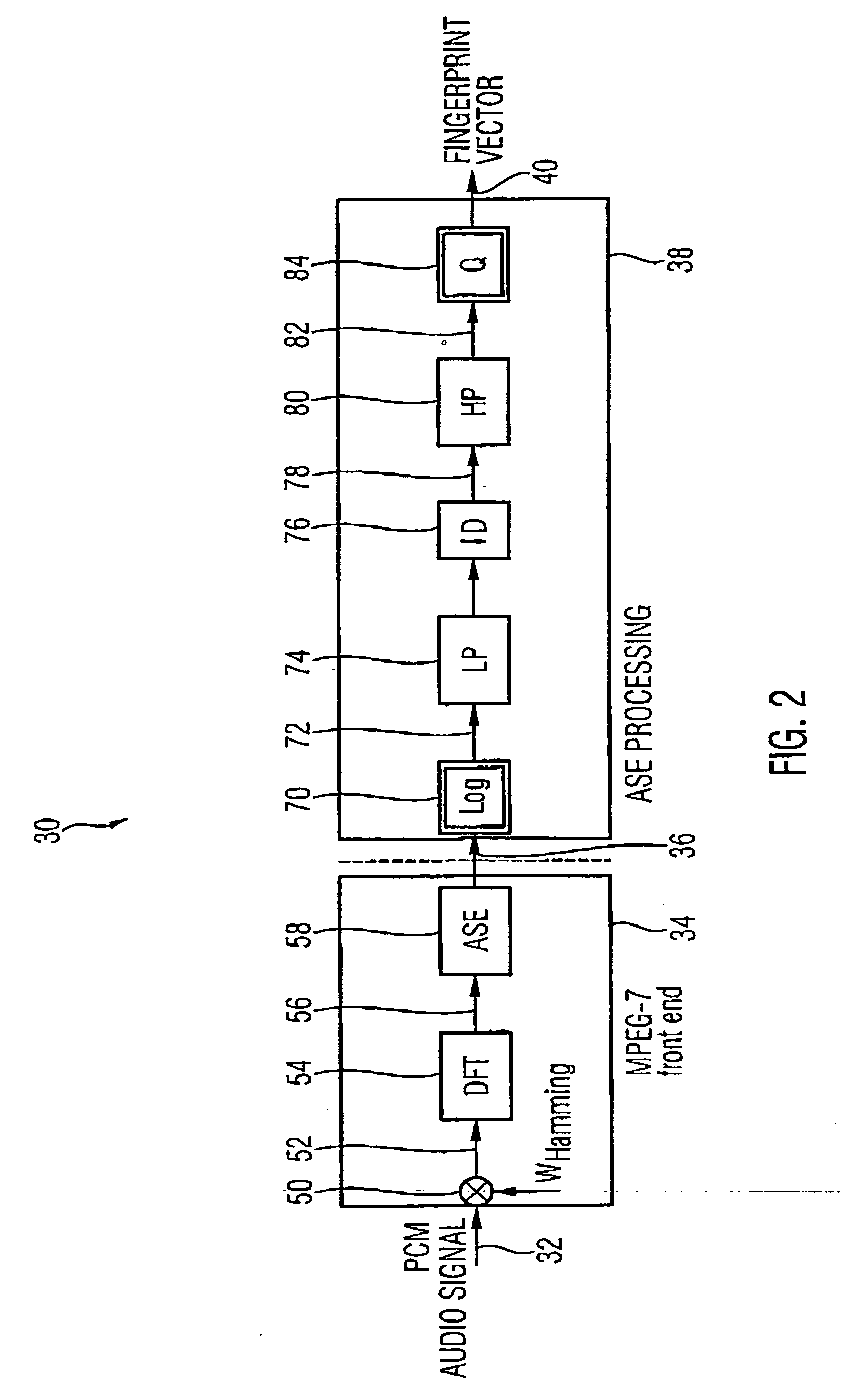Apparatus and method for robust classification of audio signals, and method for establishing and operating an audio-signal database, as well as computer program
a technology of audio signals and classification methods, applied in speech analysis, instruments, television systems, etc., can solve the problems of reducing the time required for generating fingerprints, audio signals transmitted via channels subject to distortion, and audio signals that have been subject to spectral signal distortion, etc., to achieve high level of validity, improve the accuracy of spectral signal compensation, and simplify the effect of technological further processing of energy values
- Summary
- Abstract
- Description
- Claims
- Application Information
AI Technical Summary
Benefits of technology
Problems solved by technology
Method used
Image
Examples
Embodiment Construction
[0069]FIG. 1 shows a block diagram of an inventive apparatus for producing a fingerprint signal from an audio signal, the apparatus being designated by 10 in its entirety. The apparatus is fed an audio signal 12 as an input signal. In a first stage 14, energy values are calculated for frequency bands, which will then be available in the form of a vector 16 of energy values. In a second stage 18, the energy values are scaled. A vector 20 of scaled energy values for several frequency bands will then be available. At a third stage 22, this vector is time-filtered. As an output signal of the apparatus, there will be a vector 24 of scaled and filtered energy values for several frequency bands.
[0070]FIG. 2 shows a detailed block diagram of an embodiment of an inventive apparatus for producing a fingerprint signal from an audio signal, which apparatus is designated by 30 in its entirety. A pulse-code-modulated audio signal 32 is present at the input of the apparatus. This signal is fed to...
PUM
 Login to View More
Login to View More Abstract
Description
Claims
Application Information
 Login to View More
Login to View More - R&D
- Intellectual Property
- Life Sciences
- Materials
- Tech Scout
- Unparalleled Data Quality
- Higher Quality Content
- 60% Fewer Hallucinations
Browse by: Latest US Patents, China's latest patents, Technical Efficacy Thesaurus, Application Domain, Technology Topic, Popular Technical Reports.
© 2025 PatSnap. All rights reserved.Legal|Privacy policy|Modern Slavery Act Transparency Statement|Sitemap|About US| Contact US: help@patsnap.com



